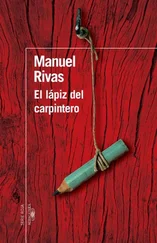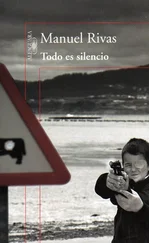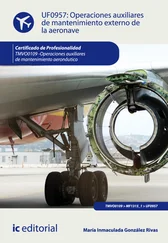Even though they accused him of being a snob, he used to talk about popular elegance. Elegance was to be found in the quality of the person, their style, and not necessarily in how much the piece cost. Coruña was a city of seamstresses. The ships that exported sadness also brought novelties. These seamstresses took photos with their imagination, copied or adjusted designs they saw on the first-class gangways of liners. They did haute couture, using humble fabrics. Huici visited popular markets and fairs in a daze. He admired the seamstresses. He once saw a group of them on Cantóns, each with a portable Singer on top of her head. There were lots of people on the city’s busiest thoroughfare, but for a moment it seemed as if a corridor was opened to allow the sewing women through. He made lots of sketches of that image he described as an amusing Biblical interlude. Make way for the seamstresses!
He ties the pure, animal black ribbon. Goodbye, Huici. Looks at Silvia, the seamstress. We have the beauty of the face. Now what we’ve got to do is a session which shows all the beauty. That which exists, but is hidden.
‘This portrait is wonderful, Silvia. Now what we need is a full-length portrait. What do you think?’
But Silvia was not the type to answer every question. She had moments of intriguing silence. Like now. Her eyes did the talking. A look that went from inside out and from outside in. Active melancholy with cinematographic curiosity.
‘The portraits will be good,’ said Leica. ‘The camera loves you. We’ll use the photos to persuade some advertisers. It’s not easy making an advert with models from here. Everything comes from abroad. People believe everything from abroad is better. Everything modern has to come from abroad. I think otherwise. An optical revolution, you see? Publicity is one of the things that’s going to change this country. We’ve been putting up with sad publicity for years. Digestive tonics, anti-dandruff lotions, restorative syrups. But now’s the time for electrical appliances. Housework will no longer be thought of as a punishment. The home will become a paradise. The woman’s smile when she opens the refrigerator. I know I’m exaggerating. But there’s no publicity without exaggeration. No publicity, no art, nothing.’
‘You can take photos of me,’ she said suddenly. ‘But not nude. Not without clothes.’
He gestured as if to protest. Was about to explain something. But, for some reason, decided to stay silent.
‘I’m fragile,’ said Silvia. ‘I know where I am.’
She then surprised him by saying, ‘I don’t want your camera to feel guilty. If I take my clothes off, it’ll be because I’m with you, not for a photo.’
None of the girls he’d taken to his studio had ever spoken to him like that. Some had got angry or cursed him, feeling duped. But they’d never spoken to him like that before.
‘I have to protect myself because, if I don’t, no one will. I know where I am. I prefer not to embarrass myself.’
‘OK. Forget about the nude photos, but don’t say that, that no one will protect you.’
‘It’s true. You might love me one day,’ she said in a mysterious tone, ‘but you’ll never protect me.’
He was crazy about her. Just seeing her drove him crazy. I’m not surprised. As a girl, after she left hospital, she carried a portable sewing machine on top of her head. She went from village to village, over the mountains. With the sun and mists. Having to find shelter from the rains and storms. Easy to say, not so easy to do. That’s what happened with Silvia, thought O. No, I’m not at all surprised Leica, Chelo Vidal’s brother, was so captivated. I said to myself, If he takes a photo of that girl who’s going by, if he takes a photo right now, she’ll stick in his head, in the workshop of his head, and never leave. It seems to me, in the case of beauty, little is more. Perhaps because you have the impression it’s close at hand. That’s what happened to Leica, he lost his head for the little girl with locks sprawling down her back like a shawl.
He went crazy, he did. Some things are understood between women carrying things on top of their heads. And that’s what happened, we knew he was head over heels. He took some photos of her for an advert. It wasn’t like other times, no. This time, he gave himself. Went after her. Loved her more than that boys’ bet he had with himself to bed every girl he used as a model. But one day Silvia left. We don’t know the reason. She was refused papers for being the daughter of who she was, one who died up in the mountains. As a girl, she was taught invisible mending. Apparently there was no one who could do what she did: reconstruct an old garment. She worked with the memory of the clothes. In the folds, nooks, hidden places of vestments, she found threads with which to graft and renew. Thread by thread, she could mend a worn-out elbow or a twist of silk.
She was thin, small, with big eyes. Big eyes and big fingers. Her whole body seemed to be at the disposal of her eyes and fingers. Silvia’s arms were very skinny. Which is why your attention was drawn to her hands, the long, pliant fingers that moved with the memory of movements.
She was given a special assignment. ‘A very special assignment,’ insisted the nuns in Domestic Service. Whoever it was had to be very important if they were being so secretive. The garment was destined for a museum, but there was a certain urgency because someone wanted it ready as soon as possible. Mother Asun gestured with her thumb, pointing very seriously upwards, but without raising her eyes. This meant whoever it was was high up, but not God. It wasn’t God’s stole or the Holy Spirit’s alb that needed invisible mending. Silvia understood Mother Asun well. It might be said they understood each other with the inside of words. It was she who taught the girl her first stitches when she was confined to bed. Worse than that, when she was tied down to the bed with belts so that she couldn’t move or get up during the night and most of the day. When she did get up, it was to eat and learn how to sew. She’d need something to do when she became a normal girl and her spine straightened. Thinking about that, about her backbone, she feels like an icicle. Lying down for years, in Oza, tied with belts, unable to walk. The diagnosis was that the deformed spine had to be controlled to stop a curve or a hump forming. All of which suffering could have been avoided with a simple treatment of penicillin. They also got up — there was a whole room of them, of ‘imprisoned girls’ — to receive communion on Sundays and feast days. With the priest came an acolyte who carried a tray with the wafers. He was the most charming boy Silvia had ever seen. Since she hadn’t seen many, we might say he was the prettiest boy imaginable. What she felt when her body was untied for communion was real hunger, an overriding desire to prolong her mouth’s movement and bite his hand and sew the boy with kisses. She knew they were not a girl’s feelings. But she wasn’t the age she was. Her enforced immobility made her live life so intensely that, when she finally got up, staggered to the window not only to see the sea she’d heard murmuring for months on end, but also to find a support, when she did this, she realised she’d already lived various lives and now had to try to rein them into her body or else go in search of them.
The sea entered her eyes with such force it made her cry. And a howl rose from inside her. Not a human shout, but a sea-howl. She thought at that moment she’d been tied not because of an incorrect diagnosis or the absurd idea of straightening her spine by force, but deliberately to keep her away from the sea. She couldn’t stop crying. She’d spent years with dry eyes. The tears had to come with a swell from her body. Of all the lives she’d lived without moving, she chose one. To be the woman of invisible mending. Asun had taught her this art when she saw the skills of all her other senses were in her fingers. Silvia had long, thin fingers. After time spent in a hospital bed, her body was very skinny. Her arms were like elder branches. But her hands ran wild when sewing and embroidering. Played at shadow puppets, which played with her hands and made them longer.
Читать дальше












